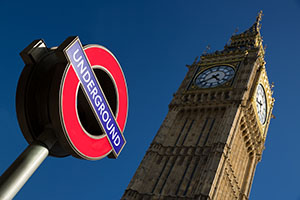 We’re not alone in expecting this deadlock debt ceiling situation to be resolved any day soon as it dramatically heads right down ‘to the wire’ (as they are fond of saying in the USA). As we’ve stated on several occasions; once individual greed rears its head, a solution will probably be found.
We’re not alone in expecting this deadlock debt ceiling situation to be resolved any day soon as it dramatically heads right down ‘to the wire’ (as they are fond of saying in the USA). As we’ve stated on several occasions; once individual greed rears its head, a solution will probably be found.
A drop of circa 800 points on the DJIA over the preceding two weeks, from its yearly high, appeared to do the trick in reminding both political parties on Capitol Hill that the situation is indeed very real. A democrat senator suggesting last week that a fall on the markets of 25% couldn’t be ruled out, also appeared to concentrate many of the minds who have no doubt profited from the rise of the main indices in the USA during 2103, entirely due to the monetary easing the USA Fed has conducted over recent months.
USA dollar reserve status brought into question
It’s not just the official news outlets of China who doubted the USA dollar’ status as the globe’s reserve currency, over the weekend European Central Bank policy maker Ewald Nowotny also warned that the dollar’s role as a leading reserve currency is at risk as a direct result of the political impasse in the U.S. Anxiety over a potential U.S. debt default has led some analysts to question whether the greenback’s days as a global reserve currency are in fact numbered. Discussions over the dollar’s diminishing role as the globe’s reserve currency has been prevalent in recent years. Analysts point to other global currencies such as the Swiss franc, the Japanese yen, or the Chinese renminbi as potential contenders for the role.
Huge number of Chinese tourists hit by the shutdown of USA govt.
The temporary closure of various national parks, museums and monuments in the USA during the partial government shutdown has caused disappointment for many Chinese tourists in the U.S. As they looked to enjoy a seven-day Chinese national holiday. And that Chinese spend is now critically important to the USA travel and tourist industry…
A decade back approx. 150,000 Chinese visited the U.S. every year, last year that figure grew to to 1.5 million. By 2017, tourist numbers are expected to triple to over 4 million, according to the estimates made by the U.S. Department of Commerce. Chinese tourists spend an average of $7,100 per capita in the U.S., more than double what American tourists spend overseas, according to the data. In 2011, the latest year for which figures are available, Chinese travelers in the U.S. spent $7.7 billion, nearly a 50% increase from 2010, according to the U.S. Travel Association.
Market overview
The Nikkei closed up 1.48% in the overnight Asian session, the Hang Seng closed up 1.16% and the CSI closed up 0.16%. The ASX 200 closed up 0.44%. European markets are experiencing mixed fortunes in the morning European session; the STOXX index is down 0.15%, the FTSE up 0.03%, the CAC down 0.24%, the DAX down 0.20%, with the Portuguese index the PSI 20 leading the rises up 0.60% on the day.
Commodities are mainly up on the day, ICE WTI oil up 0.39% at $102.42 per barrel, NYMEX natural up 1.59% at $3.84 per therm. COMEX gold is up 0.66% at $1276.60 per ounce with silver up 0.59% at $21.38
The DJIA equity index future is currently down 0.70% at 15071, the critical 15,000 psyche number in focus once again as is the SPX with the NASDAQ down 0.48%.
Forex focus
The dollar weakened 0.2 percent to $1.3565 per euro early in London after touching an eight-month low of $1.3646 on Oct. 3rd. It fell 0.3 percent to 98.25 yen. Japan’s currency rose 0.2 percent to 133.27 per euro. The dollar slipped for a second day versus the euro as talks between President Barack Obama and House Republicans hit an impasse and U.S. senators from both parties struggled to draft an accord that averts a U.S. default
The pound was little changed at 84.88 pence per euro early in London’s session after depreciating to 85.10 pence on Oct. 11th, the weakest level since Sept. 2nd. Britain’s’ currency declined against the European common currency in each of the past two weeks. The pound traded at $1.5978.
The Aussie dropped 0.4 percent to NZ$1.1332 late in Sydney after sliding 0.3 percent on Oct. 11th. It touched NZ$1.12 on Aug. 1st, the lowest since October 2008. Australia’s currency was little changed at 94.66 U.S. cents, while New Zealand’s kiwi gained 0.4 percent to 83.54 U.S. cents. Australia’s dollar extended the decline versus its New Zealand peer for a second session due to data showing home-loan approvals dropped for the first time this year in Aus.





